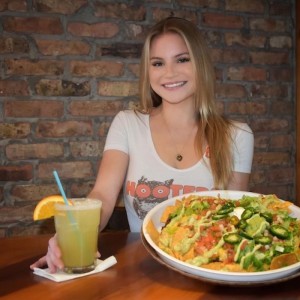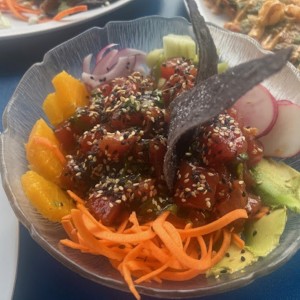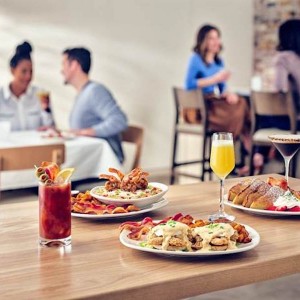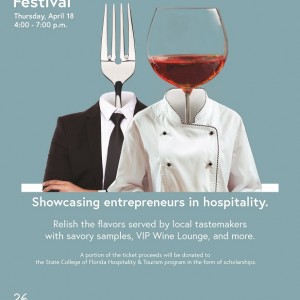The love story of the seamstress, Mimi, and the poet, Rodolfo, is captured in Giacomo Puccini’s La Bohème one of the most popular operas to be staged at Sarasota’s historic Opera House. Beginning October 30, audiences will likely turn out in droves to be captivated once again by the wrenching story of these ill-fated lovers. La Bohème is set against the bohemian backdrop of the Latin Quarter of Paris in the early 1800s when the city was crammed with young artists and writers socializing in cafés and falling in and out of love with each other, and the city, which was at turns glamorous and seedy. The café in Act II of La Bohème is The Café Momus, a real café of the time.
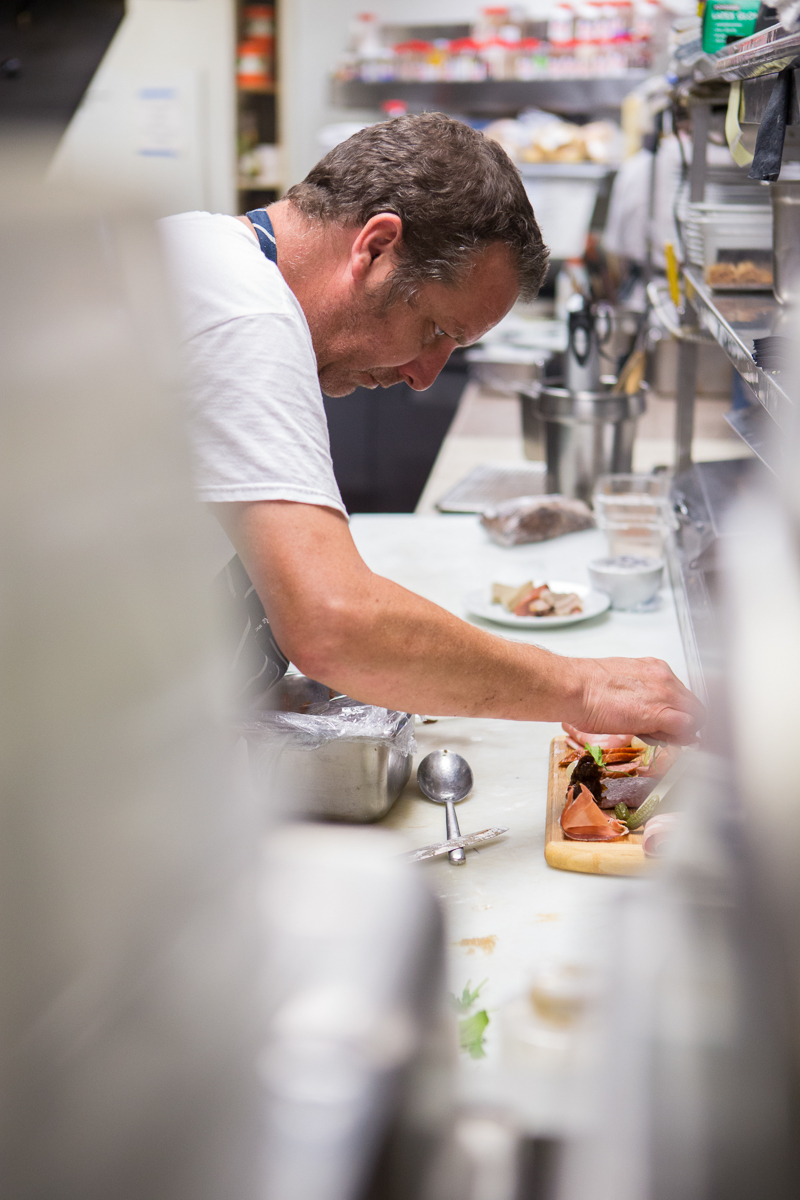
CHEF ANDREW THOMPSON OF ROAST. PHOTO BY WYATT KOSTYGAN.
Downtown Sarasota offers many sidewalk cafés and restaurants, most located around the Opera House. Roast is one such restaurant housed in a building veritably oozing history and charm with a stunning cobblestone courtyard and private dining room said to have been used as a library and social venue by John Ringling and friends. Roast proprietor and chef Andrew Thompson collaborated with us at SRQ to come up with a La Bohème-inspired menu with the idea of using food to evoke a sense of the time in which Mimi and Rodolfo fell in love. During the months of October and November, one can enjoy a feast for the senses with Chef Thompson’s three-course menu and a viewing of Puccini’s four-act opera. The La Bohème inspired menu at Roast consists of three courses for $39 and is served with a glass of Bordeaux. For the first course, you will enjoy a selection of homemade charcuterie and smoked sausages, which the boisterous denizens of The Café Momus would have devoured with gusto before moving on to the rich depth of flavor in the tender Beef a la Bourguignonne with a side of horseradish mashed potatoes. The heroine of La Bohème is the shy and sickly Mimi, who manages to meekly order the dessert that she desires as she sits amongst her ebullient dinner companions at the sidewalk café: a crème caramel. With this in mind, the third course of Roast’s La Bohème-inspired menu is a delicate Orange Scented Crème Caramel. We can’t wait to reserve a table in Roast’s beautiful courtyard and enjoy this meal with our own friends as we discuss the sumptuous beauty of the Sarasota Opera House’s production of La Boheme and the delicious homage created by Chef Thompson. To keep it a truly authentic experience, make sure to enjoy a glass of champagne before you begin your meal—we think Puccini would approve.
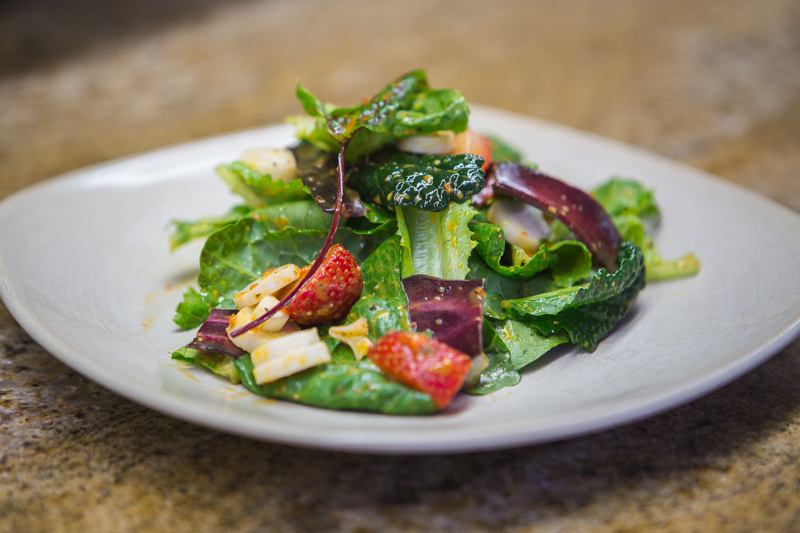
1289 PALM AVENUE SALAD CONTAINS STRAWBERRIES, HEARTS OF PALM, HEIRLOOM CARROTS AND GOJI BERRY VINAIGRETTE. PHOTO BY WYATT KOSTYGAN.
Invasion of the Garden
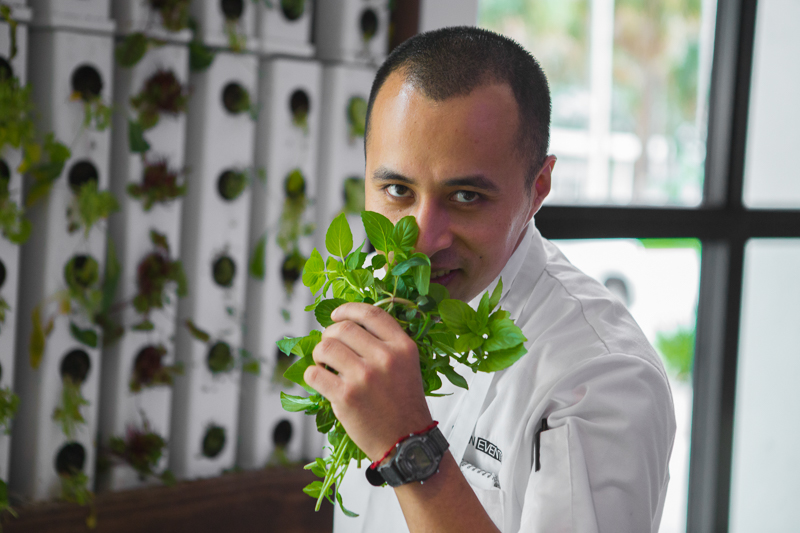
GARDEN WALL THAT GROWS KALE, THAI BASIL, MINT, SOREL, BLACK KALE, AND LETTUCE. THE WALL IS SUPPLIED BY URIAH’S URBAN FARM OUT OF TAMPA. PHOTO BY WYATT KOSTYGAN.
IN THE FOOD WORLD, TRENDS RANGE FROM THE SUBLIME TO THE RIDICULOUS and buzzwords such as “kale,” “paleo” and “fermented” are bandied about amidst a frenzy of fad diets and scientific studies. Debates rage about the perceived merits of ‘organic’ foods and ‘gluten-free’ lifestyles but the one word that seems to have staying power in the minds of chefs, consumers and critics alike is “local.” We’re urged to shop local and eat local at every turn. And this is not just a trend; it’s a movement. The local food movement began as far back as the ‘70s when President Richard Nixon made the life-altering decision to shift funds away from general farmers to specifically support corn and soy farmers, effectively changing the lives of farmers and consumers alike by filling the market with cheap, mass-produced, processed foods. The high cost of cheapening food practices has reached the level of crisis with American obesity rates at an all-time high and food safety scandals bringing food production practices in to sharp focus. What does local mean, though? There are many schools of thought regarding the true definition of the word local, especially as it pertains to food. For some, local means domestic, as in buying something produced in America rather than China. For others, local refers to a specific region of the country, or a circular radius around their hometown. Here in Sarasota, we’re fortunate to have a plethora of farmers markets and natural food stores, as well as progressive chefs that embrace the local food movement with gusto. We’re particularly impressed with restaurants that produce food that is “micro local” by growing vegetables and herbs on site. Our favorite example of the micro local movement is the Living Walls proudly displayed in the resplendent dining room at Louies Modern. TableSeide Restaurant Group, which owns Louies, is headed by Steve Seidensticker, sons Pat and Joe and daughter Lisa, with strong roots in our community and a vested interest in keeping things local. The Living Wall is a hydroponic wall garden growing various lettuces and herbs that Chef Francis Casciota and the team at Louies Modern use in daily chef-driven salad specials. “It’s an urban wall garden, the first of its kind in Sarasota,” says Joe Seidensticker. “The produce is sourced locally through Uriah farms and then grows hydroponically in the restaurant where it is harvested each week before being replenished.”
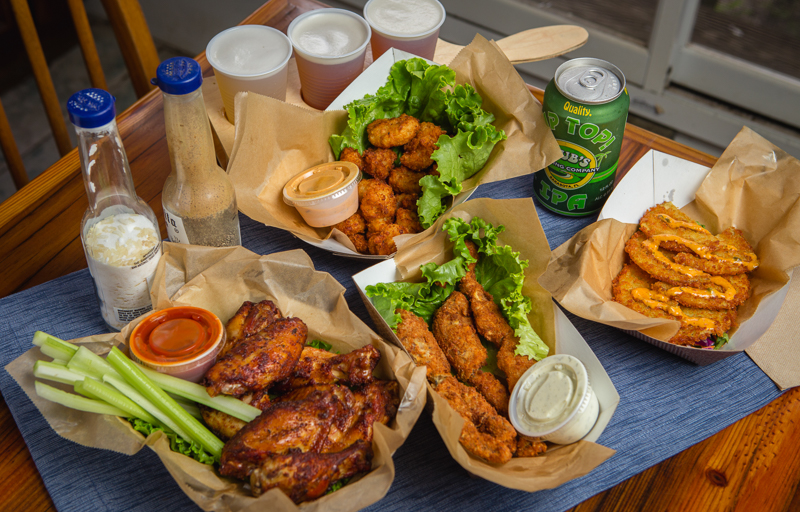
“SMOKED-FRIED FROGS LEGS, WITH FRIED GREEN TOMOTOES, FRIED GATOR BITES, AND SMOKED CHICKEN WINGS. PHOTO BY WYATT KOSTYGAN
Seafood in an Idyllic Setting
THE DRIVE TO SNOOK HAVEN RESTAURANT FROM DOWNTOWN SARASOTA is mostly uneventful – until you reach the left turn on to Venice Avenue that takes you down a pitted dirt road past sprawling residences under a shaded canopy of trees. Should you choose, you can spend the night at Camp Venice, the last stop on this remote road before you reach your ultimate destination: Snook Haven Restaurant. The establishment is the kind of eclectic dining spot that brings to mind tales of Southern Californian biker bars and Northern Californian hippie communes. You’re not at all surprised to discover this was once home to a confederacy of smugglers during the Prohibition era. A large outdoor stage features a rotating list of live music acts and a long wooden dock with canoes and kayaks waiting to be paddled down the Myakka River, which is designated by the State of Florida as one of only two “Wild and Scenic Rivers” in the state. It’s easy to see why the calm navy blue water and lush foliage is designated as ‘scenic’ but you don’t truly appreciate how this river is ‘wild’ until you’re seated inside at a wooden booth looking at the eight-foot mounted alligators adorning the walls like rustic tchotchkes. The manager explains—to the delight and squealing terror of a group of excited children—that these alligators were caught “just up the river.” Snook Haven features a varied menu of smokehouse treats and Old Florida favorites such as Catfish and Gator Bites. Head Chef Eric Eastes, uses two state-of-the-art smokers, located behind the kitchen, to make exceptionally tasty barbeque dishes such the smoked Pulled Pork Tacos, the Brisket and Spicy Slaw Sandwich, and rack after rack of meaty, juicy ribs. The sauces made in house each showcase a distinct flavor profile from the subtle burn of the mustard-based Carolina Sauce to the sassy bite of the Spicy Whiskey. Chef Eastes has been immersing himself in BBQ culture, even taking his show on the road to compete in culinary competitions. The result is an ever-evolving menu of simple dishes rich with complex smoky flavors. The Smoked-Fried Frogs Legs are a must for adventurous eaters, as are the aforementioned Fried Gator Bites. This is not an experience you want to rush; a day trip is definitely in order. Begin a clear morning by grabbing a kayak and exploring the river for a few hours—the gators may not be as cute as dolphins but the frisson of nervous energy their dark lazy shadows provide can help to work up quite an appetite. Stay for a local brew and make sure to peruse the daily specials board before eating a leisurely meal with a spectacular view and, if you time your visit right, you might serenaded by live banjo music for a truly nostalgic Old Florida experience.





